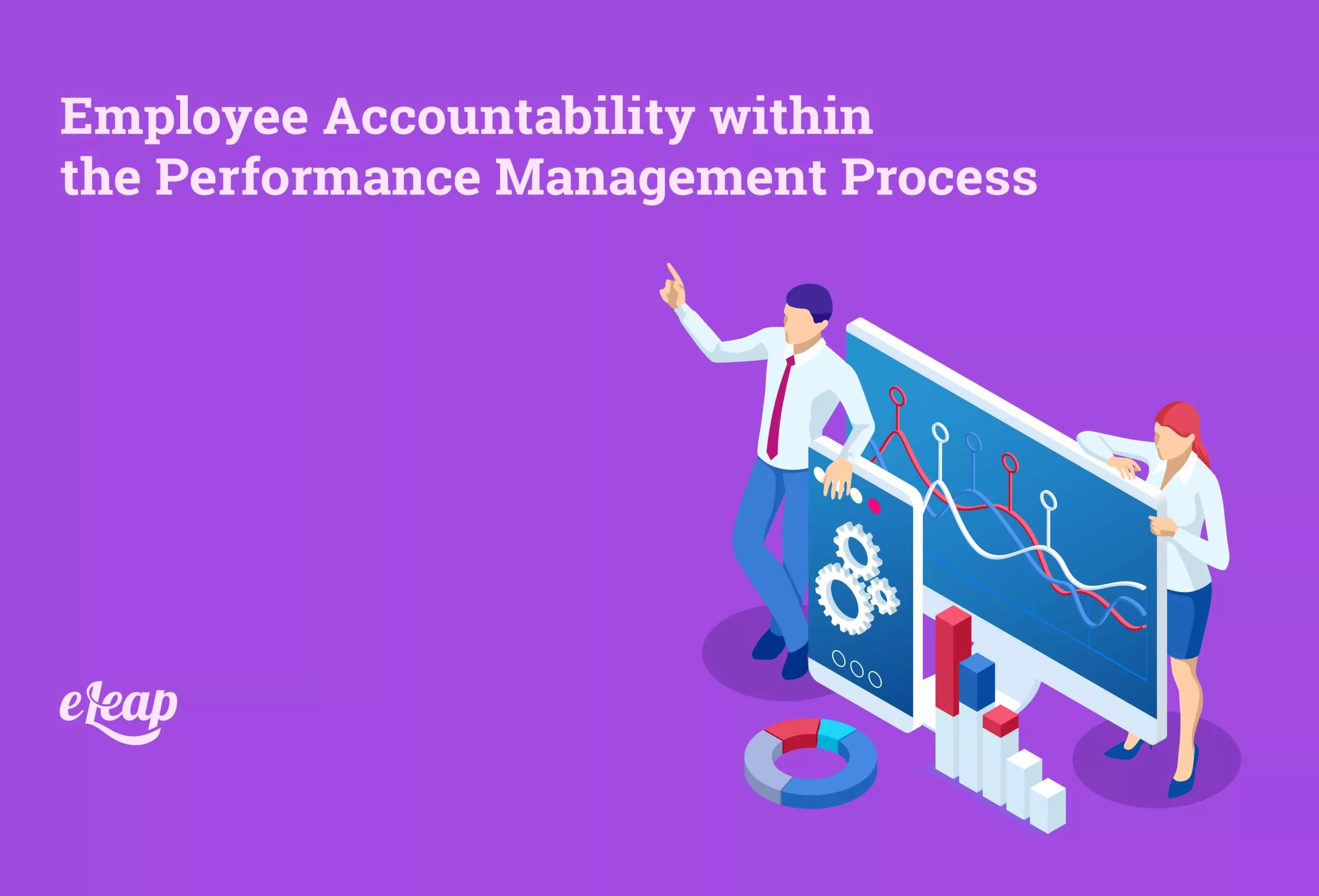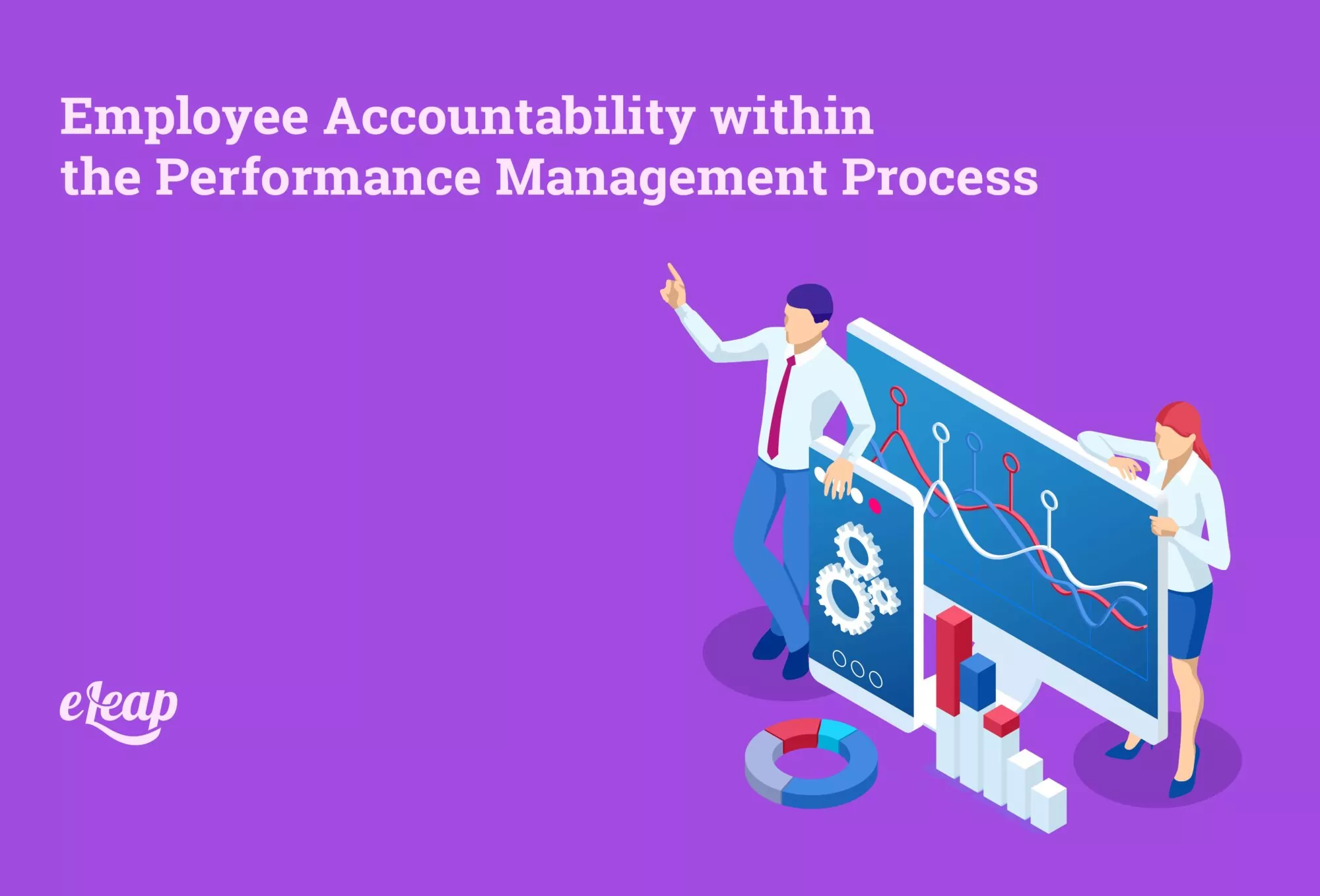Employee Accountability within the Performance Management Process

It’s challenging to attract, retain, and develop the right talent to support organization-wide success. However, even with all that hard work, sometimes employees are unable to perform at the level you require. The good news is that accountability, when combined with support and a modern approach to performance management, can yield substantial improvements.

Bringing Accountability to Your Performance Management Efforts
When done correctly, regular check-ins and one-on-ones can improve employee accountability while providing the means to improve performance, understand challenges to improvements, and achieve other critical outcomes. However, when done incorrectly, it can drive a wedge between managers and employees, reduce performance, and even create disengagement.
How do you ensure things are done correctly? We’ve included a few simple steps and tips to help.
1. Be Specific
One reason that accountability might go out the window is if employees are unsure of their responsibilities, your expectations, or other requirements. During your check-ins and one-on-ones, be as specific as possible. With specificity comes accountability – when an employee clearly understands their role and responsibilities, as well as your expectations of their performance, it becomes easier to toe the line.
2. Be Honest
Make sure that honesty is a key feature of your one-on-ones and check-ins. You might think that this is so common sense that it doesn’t bear mentioning, but the number of managers who fail here is surprising. Every review should show an accurate picture of employee performance both right now and over time. The reason that honesty sometimes falls by the wayside is that it can be hard to create an accurate performance picture.
It’s complicated. An employee might regularly exceed expectations but experience a problem that affects performance in a particular area for a limited time. The natural reaction to this is to focus on the problem and not the good performance, but both are part of the situation and must be acknowledged to keep the review honest.
3. Give Actionable Feedback
Another challenge when it comes to fostering accountability is giving poor feedback. Instead of saying, “Joe, we need to see a performance improvement,” give the employee something they can actually use. For instance, “Joe, we’d like to see your output increased by 5% within 60 days”. That’s direct, actionable, and provides concrete guidance on what’s expected when it’s expected, and what needs to be improved. Without that sort of guidance, your employees are simply guessing at what you want and when it’s required. Accountability is impossible in that situation.
Keep feedback tightly focused, relevant, and direct. Follow the SMART format whenever possible. This will require that you provide feedback in the form of a goal, and it needs to be specific, measurable, actionable, relevant, and time-bound. When feedback is provided via the SMART framework, it not only supports improved accountability but it also helps bolster performance, confidence, and engagement, and improves the employee’s ability to achieve the stated goal, since they know precisely what is expected of them.
4. Don’t Go Too Big
The saying “go big or go home” needs to be removed from most managers’ minds. It’s incredibly damaging to morale and leads to setting goals that are too far outside the scope of an employee’s capabilities. Sure, you want them to push themselves and grow, but there are better times for stretch exercises.
The solution here is to take big goals and break them down into smaller, more manageable chunks. It’s very similar to how certain topics are handled in your learning management system – they’re chunked into digestible bites to make it easier to learn, understand, and retain the information.
So, how do you break down performance-related goals into chunks that the employee will find more manageable? Start with an overview of what you want to achieve – the ultimate goal of the improvement process. Then you need to identify milestones along the way to reaching that goal.
Let’s use Joe as an example again. We want him to increase his output by 5% within 60 days. That’s the big goal. However, what does Joe need to achieve during that time to reach the goal? It could be any number of things, including:
- Learning new skills to support improved outcomes
- Mastering new technology to better reach the goal
- Working with a mentor to better understand how to improve his output
- Gaining a better understanding of the causes of reduced output and how to address those
Dig into the process that Joe will need to follow to reach the ultimate 5% improvement goal and break things down for him. Then, create a structured path with several milestones along the way. For instance, the first milestone might be completing customer service training. The second milestone might be learning how to use the CRM better. The third milestone might be achieving a 2.5% improvement in performance, and so on.
When you have this path laid out, walk through it with the employee. Discuss each milestone, why it matters, and what’s expected. When everything is clearly laid out, there is no room for ambiguity and misunderstanding, which helps foster better accountability.
5. Regular Course Corrections
Finally, you can’t just “set it and forget it”. Employee performance requires constant attention, which for managers, means regular course corrections. This is actually what your check-ins and one-on-ones are designed to provide – the opportunity to reflect on progress toward key goals, discuss challenges and needs, and make course corrections where necessary. When they receive ongoing support and help, most employees become very accountable. And, because your course corrections are timely, the employee will be able to make immediate, measurable changes that have a direct, visible effect.
More Than Performance
Accountability will boost performance across the board. However, it can also improve engagement. When employees feel that they have some degree of autonomy and that they are responsible for their success while still receiving the support necessary, loyalty increases, engagement grows, and the entire organization gets a boost.